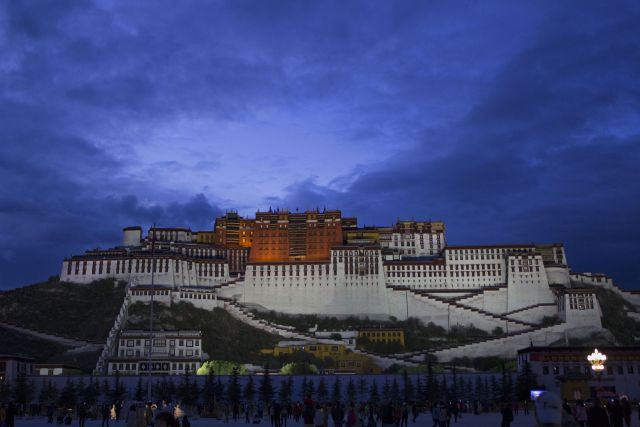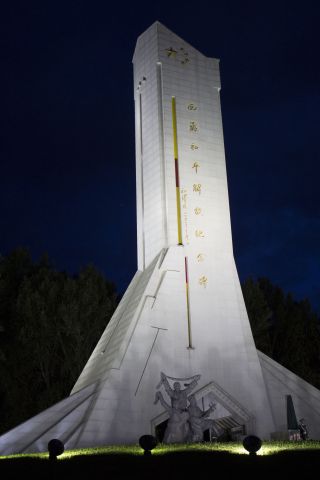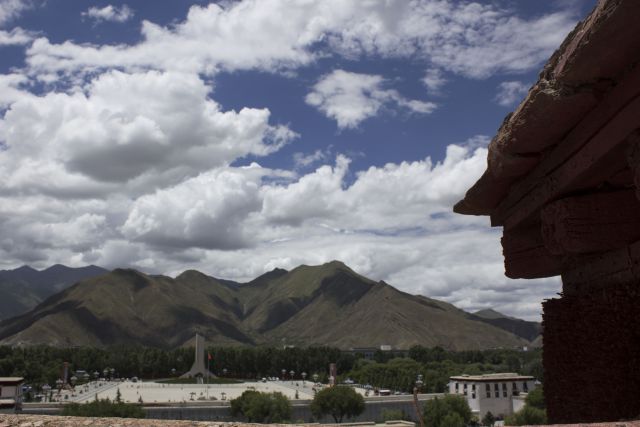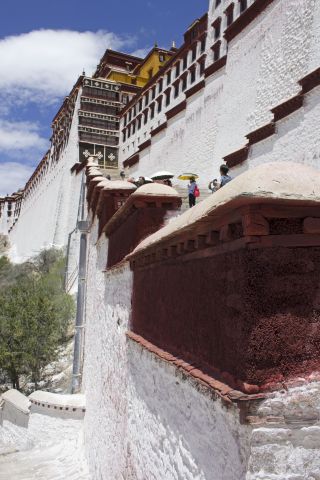Rising majestically and imposingly over the Lhasa Valley, the architecture of the Potala Palace communicates strength, power, and importance. It is a spectacular and awe-inspiring building. However, the Chinese flag flying high on top of the palace and the monument constructed across the road remind the viewer of the contested meaning of this Tibetan seat of power.
The Potala Palace, originally built in the 7th century by the famed Tibetan King Songsten Gampo, and expanded by the 5th Dalai Lama in the 17th century, has long been the centerpiece of political power in the Tibetan state. The palace contains over 1000 rooms and was used as the Winter Palace of the Dalai Lamas until the Chinese takeover in 1959. On the tour, one walks past giant mandalas, gilded Buddhas and Bodhisattvas, ornate and impressive tombs, watchful monks, and other symbols of religious and political power.
When one begins the 400+ step journey to the top, one cannot help but notice (between labored breaths) the plaza directly opposite the palace. An imposing monument, emblazoned with a message commemorating the “Peaceful Liberation of Tibet,” faces directly towards the palace. Statues of smiling Tibetans, playing instruments and holding katas, welcome their Chinese saviors. At night, the mainly Chinese visitors to this plaza take selfies in front of the illuminated palace, frolic in the fountains, and walk around the newly constructed ponds and pagodas. Propaganda music plays from the speakers, and large posters of Xi Jinping and other Communist Party leaders smile down upon the visitors. In this setting, Potala Palace becomes a pleasant backdrop, no longer a symbol of Tibetan political power and autonomy, but instead another Chinese cultural wonder and tourism destination.
I plan to use the Potala Palace with Mount Rushmore and the Hagia Sophia as examples of architectural sites that have had their meanings written and rewritten by competing and conquering groups.
Study Tour





